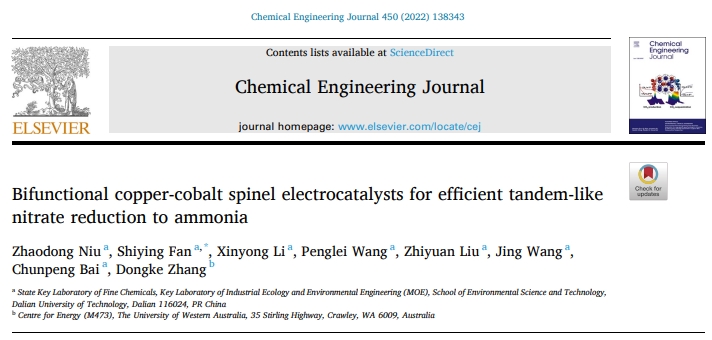

Electrocatalytic reduction of nitrate (NO3− , NO3RR) provides an effective strategy to mitigate water pollution of human-caused but obtain high-value ammonia (NH3) under environmental conditions based on renewable energy. In this study, we prepared porous carbon nanofibers (CFs)-supported CuCo2O4 composite (CuCo2O4/CFs) electrocatalyst by electrospun-pyrolysis method for efficient conversion of NO3− to NH3. The experimental results revealed that the CFs could contribute to charge transfer and inhibit the hydrogen evolution reaction (HER), which preferentially catalyzes NO3− -to- NO2−. On the other hand, internally confined CuCo2O4 nanoparticles conduce to stabilize adsorbed nitrite intermediate (*NO2) for further conversion to NH3. The CuCo2O4/CFs exhibit the maximum NH3 Faradaic efficiency of 81.9 % at − 0.3 V versus reversible hydrogen electrode (vs RHE) with a yield rate of 394.5 mmol h−1 g−1 at ambient conditions. The theoretical analysis demonstrated that the *NH3 desorption is a potential rate-determining step (RDS) with an uphill energy change of 0.76 eV over CuCo2O4. Furthermore, CuCo2O4/CFs as difunctional catalysts, coupling NO3− reduction with methanol oxidation (NO3RR||MOR) to substitute water splitting simultaneously at a low voltage. This work provides a strategy for combining NH3 electrosynthesis with methanol oxidation to high value-added chemicals under ambient conditions.